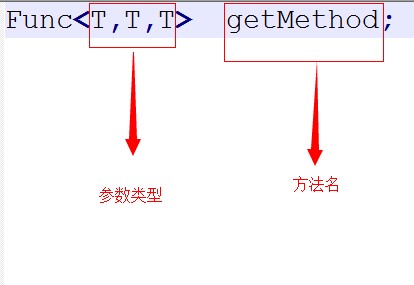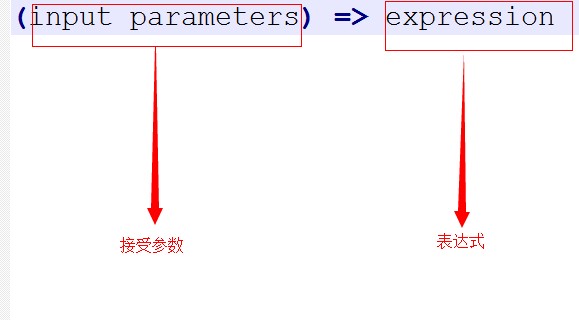c# 委托详解
日期:2014-06-10 浏览次数:20757 次
1.委托声明

2.委托入门实例
namespace ConsoleApplication1 { public delegate void methodDelegate(string str); class Program { static void Main(string[] args) { Student student = new Student(); Teacher teacher = new Teacher("王老师"); methodDelegate methodDelegate1 = new methodDelegate(student.getStudentName); methodDelegate1 += teacher.getTeacherName; //可以指向不同类中的方法! //methodDelegate1 += teacher.getClassName; 指向签名不符的方法时提示错误! methodDelegate1.Invoke("张三"); Console.ReadLine(); } } class Student { private String name = ""; public Student (String _name) { this.name = _name ; } public Student() {} public void getStudentName(String _name) { if (this.name != "" ) Console.WriteLine("Student's name is {0}", this.name); else Console.WriteLine("Student's name is {0}", _name); } } class Teacher { private String name; public Teacher(String _name) { this.name = _name; } public void getTeacherName(String _name) { if (this.name != "") Console.WriteLine("Teacher's name is {0}", this.name); else Console.WriteLine("Teacher's name is {0}", _name); } public string getClassName() { return "Eanlish"; } } }
上面代码中 实现对委托的调用
实现对委托的调用
最后将被调用的委托输出
3.委托的实现方式
第一种:常规实现
private delegate String getAString( string parament);
static void Main(String []args)
{
int temp = 40;
getAString stringMethod = new getAString(temp.ToString); //传递temp.ToString调用委托
Console.WriteLine("String is {0}", stringMethod()); //stringMethod()调用已经接受参数的委托
Console.ReadLine();
}
第二种:多播委托
getAString stringMethod = new getAString(temp.ToString);
stringMethod += temp.ToString;
stringMethod -= temp.ToString;
这种调用之后,按照接受参数的次数, 委托会生成一个列表,每用+=调用一次,会增加一个列表项,-=调用一次,会移除一个列表项。
第三种:委托数组
当我们定义委托 让委托形成一个数组的时候,我们可以通过遍历数组的方式来调用它
delegate double Operations(double x); class Program { static void Main() { Operations[] operations = { MathOperations.MultiplyByTwo, MathOperations.Square }; for (int i = 0; i < operations.Length; i++) { Console.WriteLine("Using operations[{0}]:", i); DisplayNumber(operations[i], 2.0); DisplayNumber(operations[i], 7.94); Console.ReadLine(); } } static void DisplayNumber(Operations action, double value) { double result = action(value); Console.WriteLine( "Input Value is {0}, result of operation is {1}", value, result); } } struct MathOperations { public static double MultiplyByTwo(double value) { return value * 2; } public static double Square(double value) { return value * value; } }
上面实例中

将委托定义好
之后就可以遍历它
第四种:Action<T>和Func<T>委托
利用微软预先定义的两个泛型类型来给我们调用
先看语法知识
Action<T>

Func<T>

二者都可以接受最大参数个数为16个,二者的区别在于一个有返回值,另外一个返回值为void
实例
using System; namespace DelegateFuncAction { class Program { static void Main(string[] args) { Func<double, double,double> DoAddtion = calculate.addtion; double result = DoAddtion(20, 30); Console.WriteLine("Func带返回参数委托做加法结果为:{0}",DoAddtion(10,20)); calculate c=new calculate(); Action<double, double> DoSubstraction = c.substraction; DoSubstraction(90, 20); } } class calculate { public static double addtion(double x, double y) { return x + y; } public void substraction(double x, double y) { Console.WriteLine("Action不带返回参数委托做减法结果为:{0}",x-y); } } }
二者定义的方法名都可以把函数赋予它 如下

第五种:匿名方法
匿名方法基本上和上面没有区别,只是实例化时候不同而已
class Program { static void Main() { double width = 12; Func<double, double> square = delegate(double length) { length *= width; return length; }; Console.WriteLine(square(10)); } }
这样减少了代码的编写 将一个函数直接在定义的时候赋予Func<T>或者Action<T>定义的函数
第六种:Lambda表达式
先看Lambda表达式的语法知识

例如
delegate int del(int i); static void Main(string[] args) { del myDelegate = x => x * x; int j = myDelegate(5); //j = 25 }
实例中
x => x * x就是一个参数为x 执行x*x的lambda的表达式 赋予一个委托
4.总结
在声明委托时候可以用三种方式来声明
1.用 delegate关键词来声明(需要声明返回值,接受参数)
2.Action<T>来声明一个返回值为void类型的委托
3.Func<T>来声明有返回类型的委托
委托的实现
无论委托是如何实现的,我们都是赋予它函数时候体现的
免责声明: 本文仅代表作者个人观点,与爱易网无关。其原创性以及文中陈述文字和内容未经本站证实,对本文以及其中全部或者部分内容、文字的真实性、完整性、及时性本站不作任何保证或承诺,请读者仅作参考,并请自行核实相关内容。
